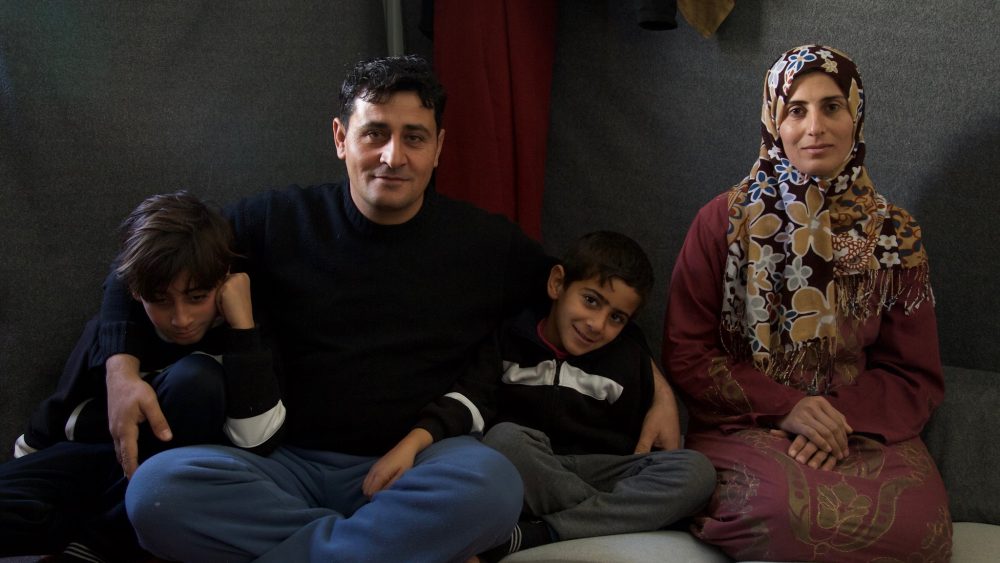“Busting Myths about Forced Migrants” is a new blog series authored by student volunteers from IRAP’s law school chapters. Each month, a different IRAP chapter will dispel a common misconception related to refugee issues. We hope this series will provide readers with talking points for the dinner table when you hear a myth being perpetuated. Thank you to UVA IRAP for contributing the first installment in this series.
Myth: It’s easy for refugees to gain admission to the United States.
Thousands of refugees living in countries such as Lebanon, Jordan, Kenya, and Malaysia are waiting for the United States to grant them admission and resettlement so that they can escape violence and persecution and live in safety.*
A commonly held misconception about these refugees is that it is easy for them to gain admission to the United States and that the U.S.’s screening process for admitting refugees is not sufficiently secure or rigorous. In reality, the United States conducts a vigorous vetting process to determine whether to accept a refugee for resettlement.
The U.S. State Department and the Department of Homeland Security manage the process through the United States Refugee Admissions Program (USRAP). While there are several ways for refugees to access USRAP, a common first step for a potential refugee is to register with the United Nations High Commissioner for Refugees (UNHCR). UNHCR conducts refugee status determination (RSD) adjudication, during which they interview the individual, collect and evaluate evidence, and determine if the person is a refugee and thus eligible for protection and potentially resettlement. Resettlement countries limit the number of refugee referrals they will accept from the UNHCR. Last year UNHCR was only able to refer less than one half of one percent of refugees worldwide, and it prioritizes the most vulnerable for resettlement referrals. Even if UNHCR refers a refugee for resettlement to a safe third country, resettlement is not guaranteed and refugees have no say regarding which country they are referred to.
If UNHCR refers a refugee to the United States for resettlement, the refugee must then go through the USRAP process and another independent adjudication. A Resettlement Support Center (RSC) puts together a case file for the refugee, gathers evidence from the refugee, and interviews the refugee to prepare for the case. U.S. government intelligence agencies then begin to run background checks and security clearance processes. If refugees are flagged during these security checks, there is often no way for them to find out what specifically prevented them from passing, creating a sense of confusion and helplessness.
Next, U.S. Citizenship & Immigration Services (USCIS) conducts in-person interviews to determine whether the applicant qualifies for resettlement, in which refugees are asked to explain their background in detail. Often, they must communicate through interpreters, which may result in misunderstanding and confusion due to regional language differences, the subjectivity of word choice, and the use of technical jargon. Factors including disability, literacy, education level, trauma, memory loss, and age can complicate and impede a refugee’s ability to communicate their story in a manner satisfactory to government officials. Furthermore, most refugees are not allowed to bring attorneys or other representatives into these interviews.
USCIS then makes a decision on the case. If the refugee is denied, there is no formal way to appeal the decision. However, the refugee can either request a re-review of their case or, for refugees who were referred by UNHCR, UNHCR may re-refer them to a different country. If the refugee is approved, they are able to resettle to the United States.
Although the United States was a historical world leader in refugee resettlement, the number of resettlement slots has diminished dramatically in recent years. Under President Donald Trump, the refugee resettlement cap has been reduced from 110,000 refugees for the 2017 fiscal year to 15,000 refugees for the 2021 fiscal year, a historic low for the country.
The entire resettlement process is very unpredictable, and can lead to significantly different outcomes for similar cases or members of the same family. Among many other factors, outcomes of this process can be affected by government ideology, the demographics of the host country (the country where the refugee is applying to resettle), and the number of refugees already resettled in the host country. Studies conducted in Canada and the United States have suggested that the identity and ideology of the individual officer deciding a refugee claim exerts the most significant influence on the outcome.
Refugee status is far from easy to obtain, and for displaced people, the outcome of this lengthy, complex, and highly subjective process can mean the difference between life and death, or family unity and family separation.
*This post discusses the United States Refugee Admissions Program (URSAP), which resettles refugees located outside of the United States. Asylum seekers at the U.S border or in the United States apply through different legal processes. We hope to write about those populations in the future, but if you are interested now, we encourage you to seek out additional resources such as https://www.humanrightsfirst.org/resource/myth-v-fact-asylum-seekers-united-states and https://www.womensrefugeecommission.org/research-resources/myth-vs-fact-refugees-seeking-protection-at-the-us-southern-border/.
—
Ariana Smith is a 1L at the University of Virginia School of Law. She’s from Charlottesville, VA and hopes to practice immigration law in the future. She serves as the IRAPSA Representative for the IRAP chapter at UVA.
Layla Khalid is a 1L at the University of Virginia School of Law. She’s from Columbus, OH and serves as the Communications Director for the IRAP chapter at UVA.




Comments are closed.